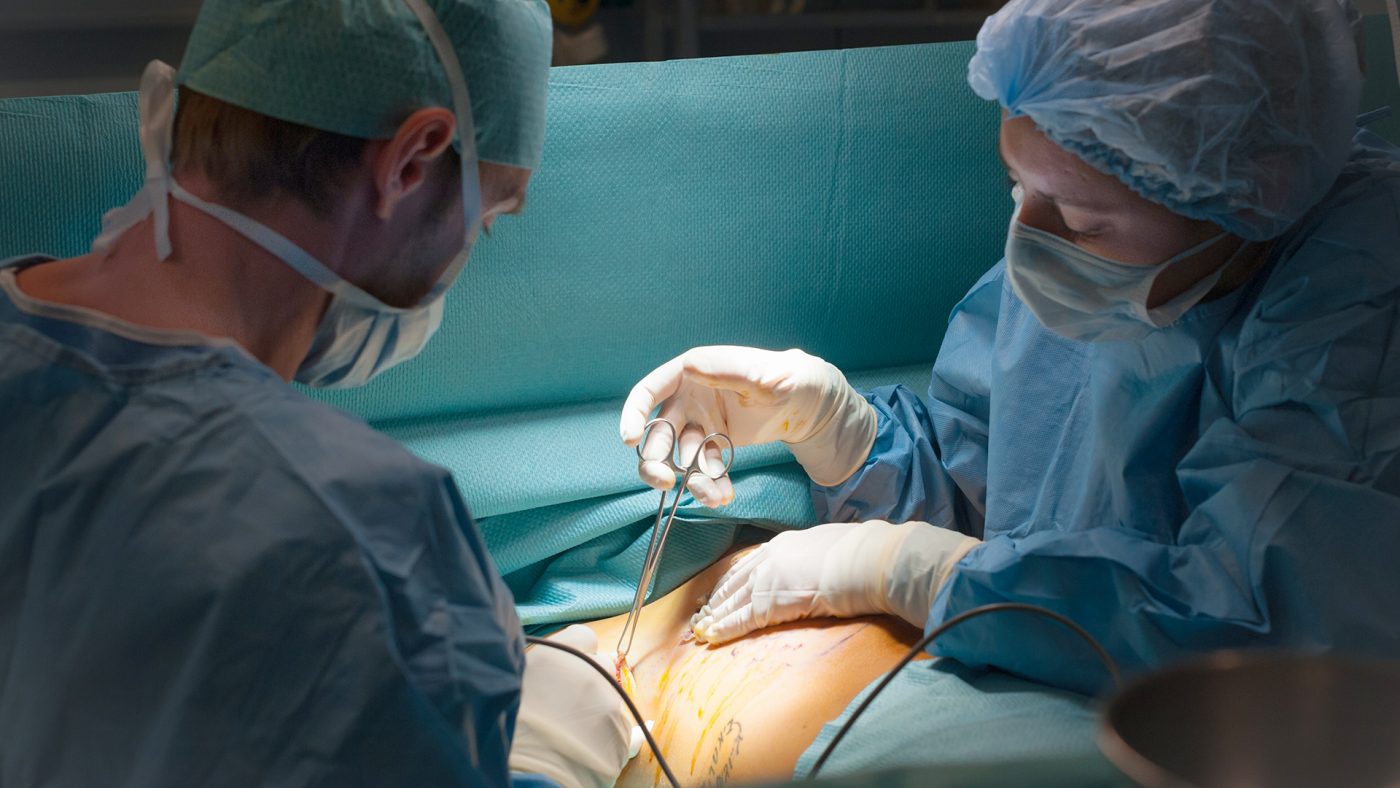Patients across the world now have access to facts about faulty or dangerous medical devices — including life-threatening ones — thanks to the publication of a database that for the first time brings together information from different countries.
Compiled by the International Consortium of Investigative Journalists (ICIJ) and media partners as part of our year-long Implant Files investigation in 36 countries, the database fills a critical information void.
The International Medical Devices Database (IMDD) offers unprecedented insight into a broken system. It permits users to explore more than 70,000 recalls, safety alerts and field safety notices executed in 11 countries in its first release. Users can search by device name, by manufacturer, or by country.
ICIJ is broadcasting the data in the public interest to provide vital safety alerts, and potential recourse to patients who, in most parts of the world, have been shut out from such information until now. ICIJ will add data from more countries as it becomes available.
The Implant Files investigation discovered that fewer than 20 percent of the countries in the world had public data online permitting citizens to find safety alerts and recall information on medical devices.
The Implant Files investigation team – more than 250 reporters and data specialists from 58 media organizations working with ICIJ – often faced official resistance as they collaborated to assemble and analyze millions of device records, recall notices and other product safety warnings. Among the recall notices were more than 2,100 in the U.S. for defects deemed to pose a “reasonable chance” of “serious health problems or death.” In Canada, 347 similar recalls were reported.
The records IMDD makes available include more than 6,700 from Spain, Finland and Mexico that have never before been disclosed to the public. They were obtained through freedom of information requests from ICIJ partners in those countries.
The IMDD presents the groundbreaking potential to explore medical device failures and recalls across the world. In many instances, it includes the level of risk associated with the use of the recalled device, the recall’s causes and corrective actions taken.
Device design (22.7 percent), was the most common cause for recalls of implantable devices reported to then identified by the U.S. Food and Drug Administration over the last decade, followed by “process controls” (11.2 percent) and “nonconforming material or components” (9.8 percent). Orthopedic, gastroenterologic, urologic and cardiovascular devices were the implants with the largest number of recalls in the U.S.
Despite all the human suffering caused by device failures, the FDA has banned just two products under a 1976 law that gave the agency the authority to ensure medical device safety and effectiveness: powdered gloves and prosthetic hair. Beyond the U.S., devices are rarely ordered off the market either, even when major problems emerge.
Typically, a manufacturer withdraws a device from the market or detects a problem with a device that would require to issue an alert and informs authorities.
According to the FDA recalls involve correction or removal action taken by a manufacturer to address a problem with a medical device. A medical device recall does not always mean that a patient must stop using the product or return it to the company. A recall sometimes means that the medical device needs to be checked, adjusted, or fixed.
International confusion
The medical device industry is organized globally but government oversight tends to end at a country’s borders. The same product can have different names across countries and, when available, model numbers can present variations, making recalled devices hard to track across borders.
There is no international consensus on what constitutes “safe enough” to remain on market. Nor is there a warning system to communicate health alerts and recalls to patients and health care providers across national borders.
Calculating the success or failure rate of a medical device in different markets is made more difficult by the failure of regulators and manufacturers to identify or connect them in any consistent way.
The absence of a universal numbering system for devices in the available data lies at the root of many of the problems that have led to patients in one country being implanted with devices that had been recalled in another due to proven health risks. Though some countries have created regulations and advocated for a universal numbering system, no global system is in place yet.
A survey by the World Health Organization published in 2017 showed that there are different numbering systems for medical devices — and most countries don’t use any system at all. Only 52 percent of the 174 WHO member states that responded to the survey used any official system to identify devices. Just 28 percent of African countries had a system.
The quality of information that could be gathered for the IMDD on levels of risk, device models in question, actions taken and other details varied widely, too, as few countries provide a classification that indicates the level of risk associated with a specific recall.
The number of recalls differs radically by country. In the last decade, the U.S. had more than 26,700 recalls; Canada had more than 8,300, while India — with more than 1 billion people — had only 14 from the beginning of 2013 through 2017, the only years for which data was available.
Mexico, which provided information on just two recalls to ICIJ’s local partners, is among the largest medical device markets in Latin America. The tiny numbers there and in India could reflect either a lack of transparency or fewer actual recalls. Patients have no way of knowing which.
Only the U.S. FDA, the world’s leading medical device regulator, provides details about whether a recalled device was also distributed in other countries.
Impact on patients
Each year, hundreds of medical implants are identified as flawed and become subject to safety alerts or recalls. Many problems are minor. But in other cases, defects and design flaws pose health hazards that require the device to be taken off the market — and even removed from patients’ bodies. The name for this procedure is explant, the opposite of implant.
As part of its investigation, ICIJ created a machine learning algorithm to screen through the text of millions of “adverse event” reports filed by manufacturers and others to the U.S. Food and Drug Administration. Nearly 500,000 reports over the last decade describe explant surgeries in connection with a medical device, ICIJ found.
“Adverse event” reports describe cases where a device is suspected to have caused or contributed to a serious injury or death, or has experienced a malfunction that would likely lead to harm if it were to recur. Medical devices were linked to nearly 83,000 deaths and 1.7 million injuries over the last decade, ICIJ found.
In some cases, the connection between the harm described in an adverse event report and the device isn’t clear, and the FDA says that conclusions about a device’s safety or role in an injury or death cannot be made from an adverse event alone.
The IMDD covers not only implants, but a wide range of devices — from gloves to defibrillators — that were recalled by manufacturers and reported to the local authorities.
Recalls aren’t consistently done at the same time — sometimes months and even years elapse between the first country and last country to act. ICIJ found that too often vital warnings don’t reach patients and doctors at all. Some devices are officially recalled, withdrawn or even banned in some countries but not others, raising questions of unequal treatment of patients across the globe.
Even when recalls or safety alerts are initiated, it can be a struggle to locate affected patients. Some patients realize only years later that they received a version of a device that had been recalled, ICIJ found.
“I also recently just found about 4-5 months ago that the FDA had my specific device, along with many others, as a Class II Recall on [date redacted] 2009. I am in shock,” one patient is quoted saying in a 2014 report filed with the FDA. The patient, implanted with a gastric stimulator, reported severe “heart pains”, and the recall had warned about bowel obstruction or perforation, requiring possible surgical intervention. The patient complained of having “never received any phone call, letter or any type of notification due to this device.”
In written comments to ICIJ, AdvaMed, the most prominent U.S. trade group for the medical device industry, disputed that device companies have problems reaching patients after recalls. “High-risk medical devices, especially life-sustaining implants, have specific tracking procedures in place to ensure companies can quickly notify patients and providers of any significant issues,” said Janet Trunzo, AdvaMed’s head of technology and regulatory affairs.
Using the database
The International Medical Devices Database includes links to primary sources for reference purposes and an interactive map that allows exploration by country, for those countries where records are publicly available or information has been obtained by ICIJ partners.
Users can explore events associated with the same product in different parts of the world. The model number is also present, when provided by the original data sources.
The IMDD is simple to use. Just by typing a device name in a search box, it is possible to see results of recalls, safety alerts and field safety notices initiated across countries. If the user is interested in one specific event, it is possible to click on it and get all the associated details.
There are other options that can facilitate finding connections and exploring the data. For example, it is possible to click on a manufacturer’s name and get events linked to a specific company.
The database’s categorization of medical specialties allows a patient with a cardiovascular device, for instance, who lived in a country where no data was available, to see whether the device was listed as high risk elsewhere.
More information on how to use the IMDD can be found in the public interactive database.
It is important that users should first check whether the affected devices are from the same lot described in the event. Patients should check with their doctors to determine if the data is relevant to their device, as the database is not intended to provide or substitute for professional medical advice.
Methodology
Drawn from several data sources, from the early 1990s to 2018, the interactive application connects more than 1,100 medical device companies and their subsidiaries to devices distributed worldwide.
ICIJ and its media partners in 36 countries trawled websites of health authorities around the world to identify public data on recalls, safety alerts or field safety notices, then we harvested it.
In the many countries where there was no public data, ICIJ partners filed freedom of information requests to health authorities in attempts to garner it. Still, the database may not include information from some countries with no public data.
The gathered data varied in structure and quality. Because there was no universal numbering system for devices, ICIJ linked the manufacturer’s name with its parent company. ICIJ used U.S. Securities and Exchange Commission filings and Dow Jones Factiva reports as primary sources to identify parent companies of manufacturers.
The team used FDA Device Classification Panels to identify broad categories of medical specialties that would use specific devices, such as cardiology and orthopedics. This classification was extended to other countries when needed to facilitate navigation.
Anyone who is aware of information that could add to this effort is encouraged to share tips with ICIJ and the Implant Files journalists, who will continue to investigate and build this public service database. The full dataset is available for download pursuant to specific terms.
The IMDD team: Emilia Díaz-Struck, Miguel Fiandor Gutiérrez, Pauliina Siniauer, Margot Williams, Pierre Romera, Hilary Fung, Karrie Kahoe, Delphine Reuter, Cécile S. Gallego, Spencer Woodman, Barnaby Skinner, Antonio Hernández Rodríguez, Fabiola Torres, Andrew Lehren, Emily Siegel, Valerie Ouellet, Ville Juutilainen, Minna Knus-Galan, Marco Visser, Daniele Grasso, Helena Bengtsson, Caelainn Barr, Boyoung Lim, Ricardo Brom, Yasuomi Sawa, Amy Wilson-Chapman and Hamish Boland-Rudder, Mexicanos contra la Corrupción, Quinto Elemento Lab and Proceso.







